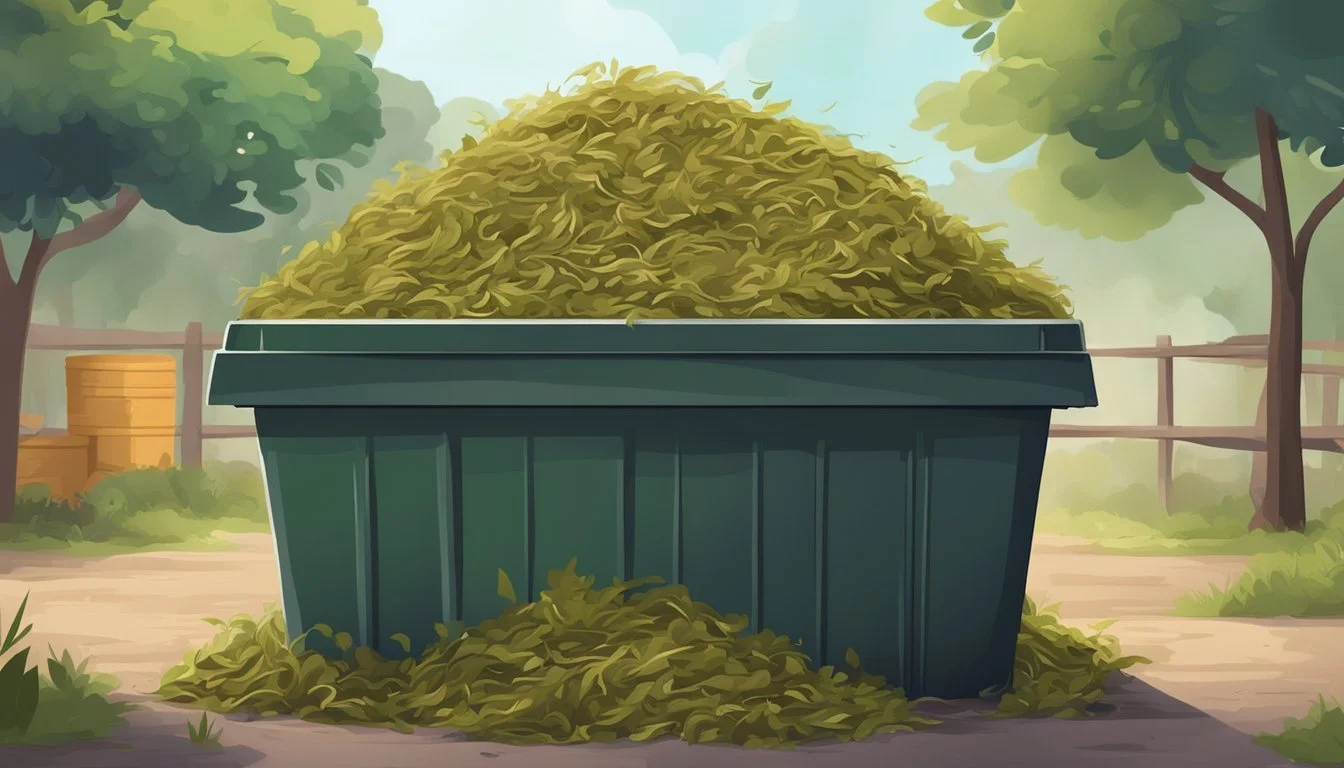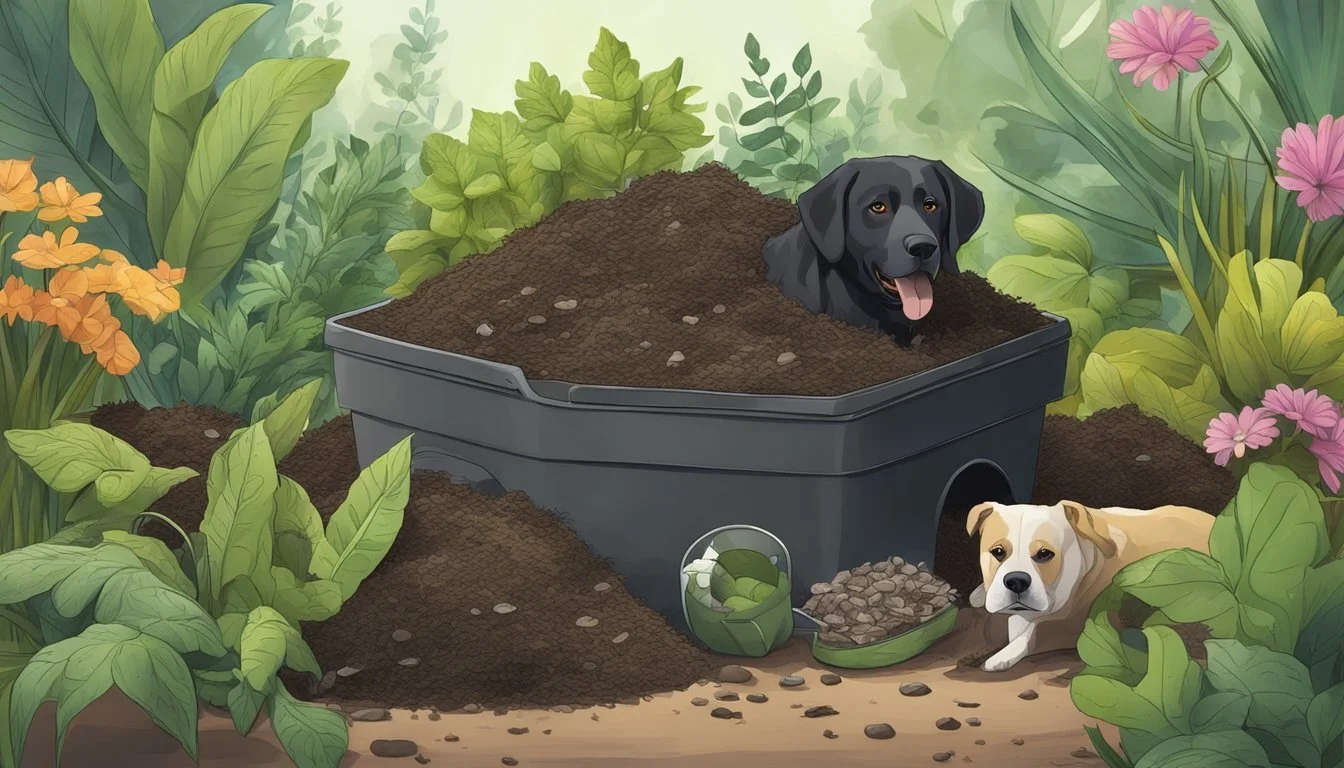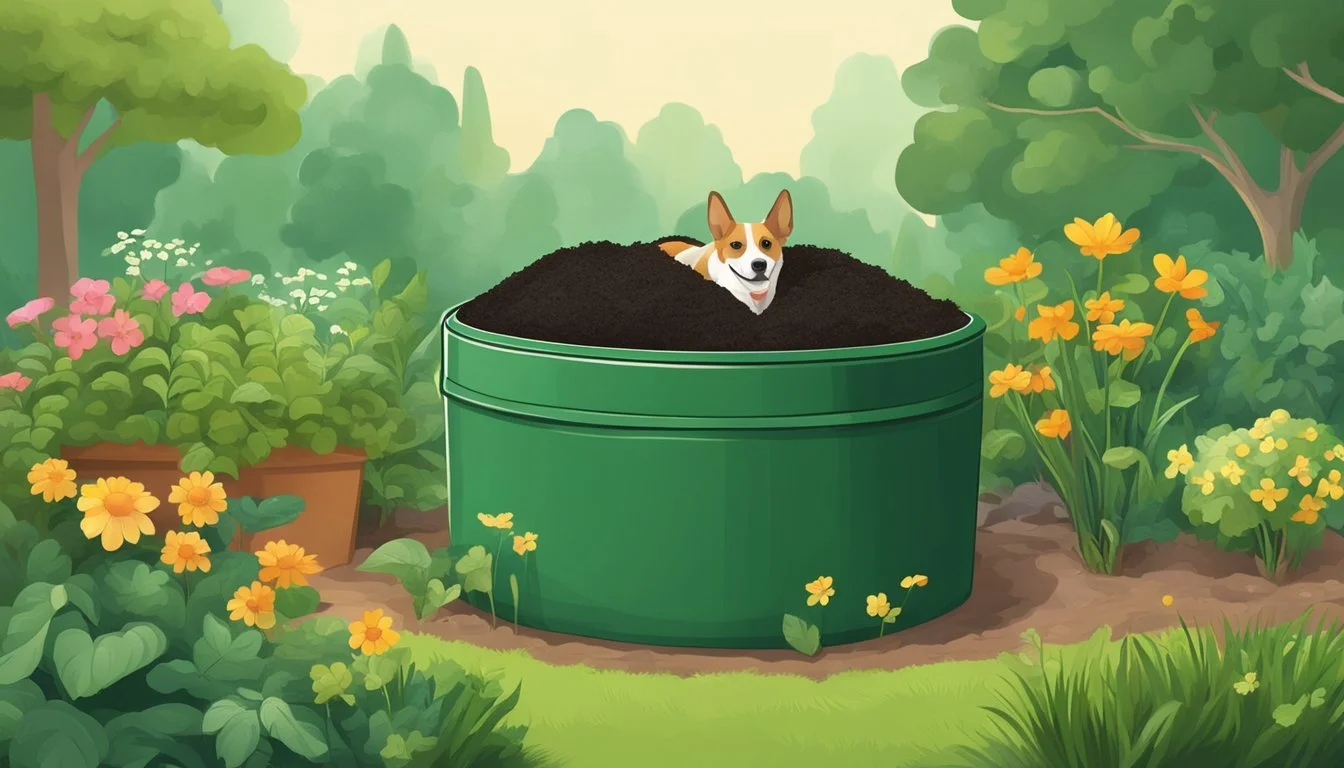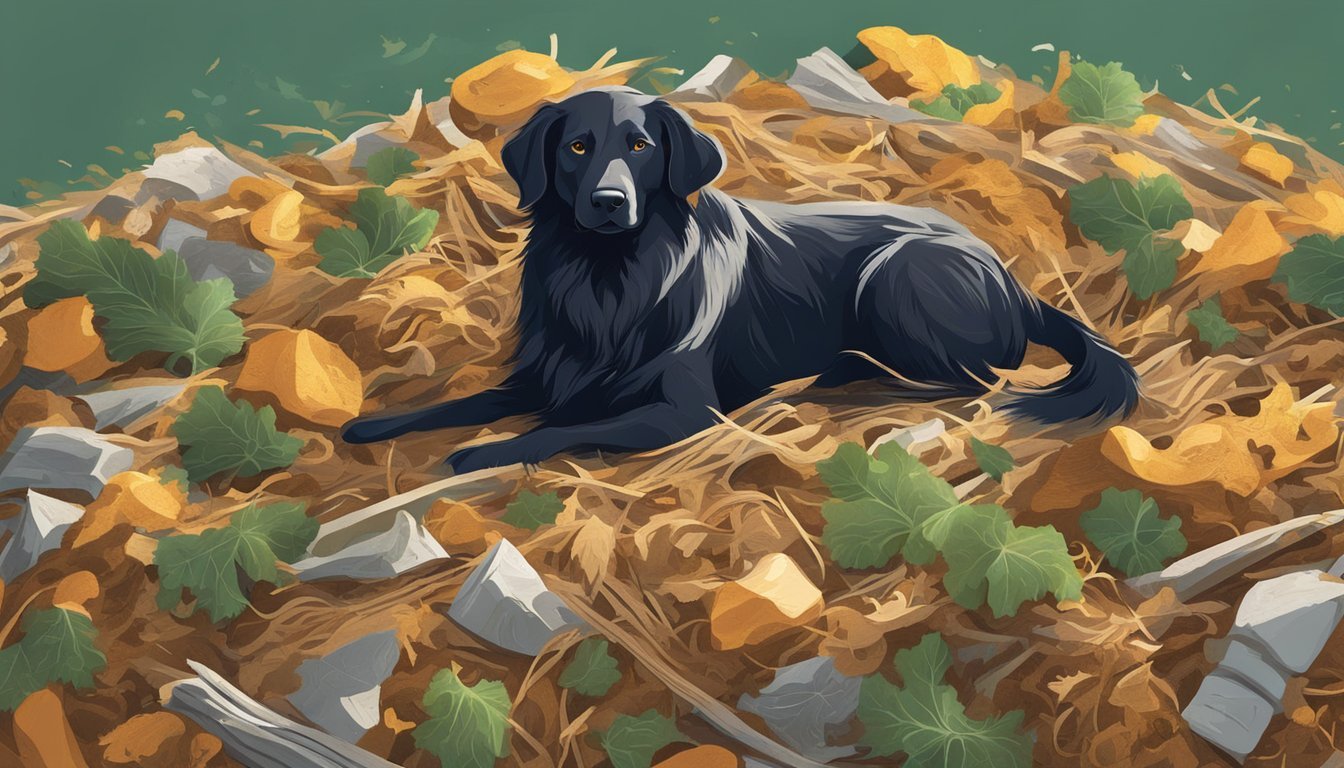Can You Compost Dog Hair?
Understanding Pet Fur in Compost Bins
Composting dog hair is a practice that has gained attention among eco-conscious pet owners looking to reduce waste and contribute positively to the environment. Dog hair, much like human hair, is a natural material that indeed can be broken down by microbes and repurposed into a nutrient-rich compost that can help improve soil quality. The benefits of composting dog hair include reducing landfill waste and providing a source of nitrogen, an important nutrient for plant growth.
However, there are considerations to be made when adding dog hair to compost. It is recommended to avoid composting hair from dogs that have been treated with topical flea treatments or other chemicals, as these may not decompose properly and could potentially harm beneficial composting organisms or the plants that will eventually be nourished by the compost. It is also worth noting that while compostable, dog hair can take some time to break down due to its keratin content, which is a robust protein that resists decomposition.
With these points in mind, composting dog hair can be a sustainable solution for managing pet waste, as long as the hair is free from chemical treatments. The presence of dog hair in a compost pile introduces a source of organic material that, given time and proper composting conditions, will decompose and enrich the soil, offering an environmentally friendly way to utilize what would otherwise be considered waste.
Understanding Composting Basics
Composting is an eco-friendly method to recycle organic matter into nutrient-rich soil. It involves the controlled decomposition of organic material, facilitated by microorganisms, and benefits the environment by reducing waste.
The Role of Nitrogen in Composting
In composting, nitrogen is essential as it fuels the growth of the microbes that break down organic matter. Materials high in nitrogen, commonly referred to as "greens," include kitchen scraps and yard waste such as grass clippings and, relevantly, dog hair. These elements provide the energy needed for bacteria and other decomposers to thrive.
Facts:
Essential for Microbes: Nitrogen is a key component of the proteins, nucleic acids, and cellular structures of microbial cells.
Balancing Act: For effective composting, a balance between nitrogen-rich greens and carbon-rich browns (such as leaves, straw, and wood chips) is crucial; typically, a ratio of 1 part greens to 25-30 parts browns is recommended.
Decomposition Process in Composting
Decomposition in composting is a complex process involving numerous microorganisms, including bacteria, fungi, and actinomycetes. These microorganisms require moisture and heat to effectively break down organic materials into compost.
Key Stages:
Active Decomposition: Organic matter is rapidly broken down by microbes, generating heat in the process.
Cooling and Maturation: The compost pile cools down as the materials decompose, allowing for the growth of different microbial species that further break down the matter into humus.
Final Product: The end result is compost, a dark, crumbly substance that enriches soil with nutrients, improves its structure, and aids in moisture retention.
Conditions for Optimal Decomposition:
Aeration: Introducing oxygen by turning the pile regularly to maintain microbial activity.
Moisture Level: Keeping the pile as moist as a wrung-out sponge ensures the microbes have the necessary water for metabolic processes.
Particle Size: Smaller pieces of organic material provide a larger surface area for microbes to work on, leading to a faster decomposition.
By understanding these fundamental aspects of composting, one can appreciate the intricate balance required to transform organic waste into valuable compost for gardening and agriculture.
Composting Dog Hair
Composting dog hair can be an environmentally friendly method of dealing with pet waste, adding valuable organic materials to compost. However, certain conditions must be met to ensure efficient decomposition.
Is Dog Hair Compostable?
Dog hair is compostable as it's an organic matter composed primarily of keratin, a protein that decomposes over time. Here are specific points:
Decomposition Rate: Dog hair decomposes at a rate comparable to other organic materials in your compost bin.
Chemical Treatments: One should avoid composting dog hair that has been treated with chemicals, such as those found in topical flea treatments, as these can disrupt the compost ecosystem.
Conditions for Composting Dog Hair
When adding dog hair to compost, several conditions are essential to aid the decomposition process:
Balance: Dog hair should be considered a nitrogen-rich material, which means it should be balanced with carbon-rich materials (browns) to maintain the optimal carbon-to-nitrogen ratio.
Nitrogen-Rich Materials (Greens) Carbon-Rich Materials (Browns) Dog Hair Dry leaves Food Scraps Cardboard Grass Clippings Straw
Temperature: To ensure rapid and sanitary decomposition, maintaining pile temperatures between 135-160°F (57-71°C) will help eliminate pathogens.
Aeration: Regularly turning the compost pile improves oxygen flow and facilitates the breakdown of dog hair.
By meeting these conditions, composting dog hair can be effectively integrated into a composting system without concerns of slow decomposition or chemical contamination.
The Benefits of Dog Hair in Compost
Incorporating dog hair into compost heaps offers specific advantages for soil enrichment and environmental sustainability. Through its nutrient profile and physical properties, dog hair serves as a valuable organic addition.
Nutrient Contribution to Soil
Dog hair is primarily composed of keratin, a natural protein that breaks down over time, releasing nitrogen into the soil. Nitrogen is an essential nutrient that supports plant growth. Adding dog hair to compost contributes to creating nutrient-rich soil that benefits garden plants.
Improving Soil Structure
The texture of dog hair can help improve soil structure, allowing for better water retention and drainage. As dog hair decomposes, it increases the organic material in the soil, fostering soil health by supporting beneficial microbial activity.
Waste Reduction Impact
Composting dog hair supports waste reduction by diverting it from landfills. This practice emphasizes the benefits of composting by repurposing pet grooming waste into valuable fertilizer, reducing the environmental impact and promoting a more sustainable approach to waste management.
Challenges and Considerations
When composting dog hair, one must navigate through specific challenges and consider various factors to maintain a healthy compost environment. These include mitigating pest threats, controlling odor and upkeep demands, as well as ensuring the right balance of compost materials for optimal decomposition.
Potential Pests Threats
Pests can be attracted to dog hair in compost, as it can provide nesting materials for rodents and insects. To deter these unwanted visitors, it is crucial to bury the dog hair under other compostable materials and maintain a proper layering technique that combines green and brown materials.
Layering Technique:
Bury dog hair 6-8 inches deep.
Alternate with layers of green (kitchen scraps) and brown materials (leaves, cardboard).
Managing Odor and Maintenance
Odor can become a challenge if the compost pile is not properly maintained. Surefire strategies to manage odor include:
Regular Maintenance:
Turn the heap every 2-3 weeks to incorporate oxygen and speed up decomposition.
Ensure the pile has adequate moisture, resembling a wrung-out sponge.
By actively managing the compost heap, one also aids in temperature regulation, which is vital for breaking down materials and killing pathogens.
Compost Content and Balance
A well-balanced compost pile requires the right mix of nitrogen (green materials) and carbon (brown materials), with dog hair being a source of nitrogen. However, in excessive amounts, dog hair can throw off the balance, potentially slowing down the composting process.
Balancing Techniques:
Use thin layers of dog hair interspersed with other materials.
Aim for a carbon to nitrogen ratio (C) of 30:1 in the pile for optimal results.
Continuously monitoring and adjusting the content of your compost ensures that heat, moisture, and oxygen levels are conducive to proper composting, creating a nutritious fertilizer for gardening applications.
Dog Hair Composting Techniques
Composting dog hair is a simple process that can enrich compost heaps with nitrogen-rich material. This section provides specific techniques for preparing and adding dog hair to compost, ensuring optimal decomposition.
Preparing Dog Hair for Composting
Before adding dog hair to a compost heap, it should be free of any chemical treatments such as flea treatments or other non-natural substances which could harm the composting process. Dog hair should be collected and may need to be spread out to dry if it’s damp.
Adding Dog Hair to Compost Heaps
When incorporating dog hair into a compost pile, it's important to mix it thoroughly with other organic materials to maintain a balanced compost. Dog hair is considered a green material and should be balanced with brown ingredients like:
Dry leaves
Straw
Woody prunings
Cardboard
The hair should be added in moderate quantities to prevent matting and ensure proper aeration throughout the compost heap is maintained. Regular turning of the pile with a pitchfork or shovel will help aerate the compost, which is crucial for the decomposition process.
Safe Composting Practices
When composting dog hair, it's essential to address both potential chemical contaminants and the factors that contribute to efficient decomposition to ensure a safe composting environment.
Dealing with Flea Treatments and Chemicals
Dog hair treated with flea treatments or other chemicals may carry substances that could be detrimental to the composting process. These chemicals can inhibit microbial activity necessary for decomposition and may introduce harmful pathogens into the compost. To minimize risks:
Inspect: Ensure that the dog hair has not been recently treated with chemicals.
Wait: If the hair has been exposed to chemicals, wait a period—typically a few weeks—before adding it to the compost pile to allow for the breakdown of these substances.
Ensuring Proper Decomposition
For dog hair to decompose effectively within a compost pile, certain conditions must be met. The hair is composed largely of keratin, a durable protein that can take time to break down. To aid the decomposition process:
Balance: Mix dog hair with high-nitrogen materials—like food scraps or green yard waste—to create a balanced compost.
Aerate: Regularly turn the compost pile to provide essential oxygen that speeds up decomposition.
Moisture: Maintain a consistent level of moisture—compost should be damp but not wet, as too much moisture can create an anaerobic environment that slows decomposition.
By following these guidelines, composting dog hair can be done effectively, contributing valuable nutrients like sulfur to the finished compost while being mindful of the potential risks.
Alternative Uses for Dog Hair
Dog hair, typically considered a nuisance for pet owners, can find its way into various applications besides composting. With its properties of insulation and texture, dog hair serves purposes in gardening and arts, contributing to sustainable practices.
Gardening and Mulching
In gardens, dog hair can be an effective mulch, which helps retain soil moisture and suppresses weed growth. Its fibrous nature allows it to mat down around garden plants creating a barrier. Furthermore, because it is organic, it slowly breaks down, adding nutrients to the soil.
Insulation: Dog hair acts as a natural insulator. When used in garden beds, it can keep soil warm during cooler months.
Crafts and Home Uses
For crafts, dog hair can be spun into yarn, much like sheep's wool, called chiengora. This yarn can be knitted or woven into various items. Additionally, dog hair can also be used for stuffing homemade toys or pillows due to its softness and insulation properties.
Crafting Material: Transformed into a unique yarn.
Home Insulation: Used in small-scale insulation projects.
Environmental Impact
Composting dog hair can significantly reduce environmental pressure by diverting waste from landfills and fostering eco-friendly waste management habits.
Reducing Landfill Waste
When dog hair is disposed of in regular trash, it contributes to landfill mass. Landfills are major sources of greenhouse gas emissions, particularly methane, which is more potent than carbon dioxide in trapping heat in the atmosphere. By composting dog hair, one effectively recycles this organic material, preventing the production of methane and reducing the overall environmental impact.
Methane Reduction: Composting dog hair transforms it into useful soil amendments, avoiding methane release in landfills.
Recycling Organic Material: Dog hair is composed of natural fibers that break down in compost, reinforcing the cycle of organic matter.
Supporting Sustainable Practices
Composting is a cornerstone of sustainable practice. It turns waste into a resource, particularly for gardening, providing an eco-friendly option for pet waste management. Dog hair compost helps maintain a healthy garden ecosystem and reduces the need for synthetic fertilizers, which are associated with greenhouse gas emissions during their production and transportation.
Eco-friendly Gardens: Dog hair enriches compost with nitrogen, benefiting garden soil health.
Carbon Footprint Reduction: By composting, individuals lower their carbon footprint and contribute to an environmentally sustainable practice.
Integrating Dog Hair into Other Organic Waste
When looking to enrich a compost pile with dog hair, it's essential to integrate it thoughtfully with the other organic waste to ensure proper decomposition and to avoid attracting pests.
Composting Pet Hair with Other Organic Waste
Integrating dog hair into a compost pile can be highly beneficial due to its nitrogen content, which complements carbon-rich items such as leaves, straw, and cardboard. A healthy compost pile should maintain a balance between green materials (nitrogen-rich) and brown materials (carbon-rich). Here’s how you can mix dog hair with different types of organic waste:
Food Scraps: Combine dog hair with vegetable scraps and fruit peels. This mixture adds nutrients and improves the pile's balance.
Yard Waste: Mix in grass clippings, which are also nitrogen-rich, to help break down dog hair.
Other Animal Hairs: You can add cat hair or human hair, as they are similar to dog hair in compostability.
Note: Avoid putting dairy products and meat into your compost as they can attract pests.
Avoiding Non-Compostable Materials
The inclusion of non-biodegradable materials in a compost heap impedes the composting process and can harm the environment. Here are materials to keep out of your compost bin:
Synthetic Fibers: Articles like nylon or polyester do not break down and should not be mixed with pet hair in compost.
Dyed or Treated Pet Hair: Sometimes, pet hair is treated with chemicals; it's prudent not to compost this type as it may introduce toxins into the pile.
Biodegradable Materials Only: Ensure that only biodegradable waste like dog hair, food scraps, yard waste, etc., is added to your compost.
Compost Maintenance and Troubleshooting
Compost maintenance is essential for efficient decomposition, especially when incorporating unique materials like dog hair. Paying close attention to aerating the pile and ensuring the right environmental conditions are sustained, helps in creating a nutrient-rich natural fertilizer.
Aerating the Pile
Aeration is a critical factor in composting as it promotes microbial activity and speeds up decomposition. Dog hair in the compost needs to be evenly dispersed to avoid matting and ensure that the pile does not become anaerobic. To aerate the pile, gardeners should turn the compost regularly, ideally every one to two weeks. This introduction of air helps to maintain the necessary oxygen levels that support the breakdown of biodegradable materials.
Aeration tools: pitchforks, aerating tools, or compost turners.
Frequency: every 1-2 weeks, or when the center of the pile feels warm.
Signs of poor aeration: foul odor, slow decomposition, or dense, matted clumps.
Maintaining the Right Conditions
The right balance of conditions in a compost pile is crucial for the successful decomposition of organic matter, such as dog hair. Maintenance of the pile involves regulating moisture levels, and the carbon-to-nitrogen ratio of 'green' and 'brown' ingredients.
Ideal moisture: The pile should be as moist as a wrung-out sponge to optimize water retention and microbial activity without becoming soggy.
Green ingredients: nitrogen-rich materials like vegetable scraps or grass clippings should be alternated with dog hair layers to prevent nitrogen depletion.
Brown ingredients: carbon-rich materials like leaves or straw balance the nitrogen and enhance airflow in the pile.
Watering: occasional watering may be necessary during dry periods to maintain moisture levels, but careful not to overwater.
By regularly turning the compost, and carefully balancing green and brown ingredients with the appropriate moisture level, the pile will transform into a natural fertilizer that enriches the soil.
Advanced Composting Techniques
In advanced composting, precise methods enhance decomposition speed and nutrient content. These techniques require careful maintenance and monitoring, particularly when incorporating materials such as dog hair.
Hot Composting Methods
Hot composting is a process that rapidly breaks down organic matter through heightened microbial activity, which generates significant heat. For those composting dog hair, this method is especially beneficial as the high temperatures, reaching between 130°F to 160°F (54°C to 71°C), can aid in breaking down the hair more efficiently. Key factors in hot composting include:
Balance: A mix of green (nitrogen-rich) and brown (carbon-rich) materials is crucial. Dog hair, a nitrogen-rich ingredient, should be balanced with carbon sources like leaves or straw.
Size: Smaller pieces decompose faster; hence, if feasible, cutting or shredding the hair can be helpful.
Aeration: Introducing oxygen is essential. This can be achieved by regularly turning the pile with tools like a pitchfork or compost aerator.
Moisture: The pile should be kept damp but not wet to aid microbes.
Task Action Needed for Hot Composting Aeration Turn pile every 2-5 days Moisture Maintain as damp as a wrung-out sponge Balance Aim for 25-30 parts carbon to 1 part nitrogen Monitoring Check temperature to ensure 130°F - 160°F range
Vermicomposting with Dog Hair
Vermicomposting incorporates the use of specialized worms, usually red wigglers, to break down organic waste. When adding dog hair to a vermicompost system, one should consider:
Quantity: Introduce dog hair in small amounts to assess worm activity and avoid overloading the system.
Preparation: Mix the hair with other organic materials to prevent matting, which could impact aeration and worm movement.
Observation: Monitor the bin to ensure that the worms are processing the hair effectively without any negative effects.
Dog hair in vermicomposting enriches the resulting compost with keratin, a beneficial protein that enhances soil structure and health. However, patience is necessary as worms process hair slower than other kitchen scraps.
Final Thoughts on Composting Dog Hair
Composting dog hair is a sustainable practice that enables pet owners to turn a waste product into valuable organic material. It is a simple method to manage pet hair and contribute to the health of one's garden.
Here are key takeaways:
Sustainability: Composting dog hair aligns with eco-friendly efforts, reducing waste and repurposing it into compost that enriches soil.
Organic Material: Dog hair breaks down over time, adding nitrogen to compost, much like other natural fibers.
Considerations: Not all dog hair is the same – single-coated breeds' fur composts more effectively than that of double-coated breeds.
One should ensure a balanced compost mix by:
Adding Layers: Intermix dog hair with other compost materials like vegetable scraps or grass clippings.
Moistening: The pile should be moist to facilitate decomposition.
Aeration: Regularly turn the compost to introduce oxygen and speed up the process.
Timeframe: The decomposition can range from a few months to a year, depending on conditions and care.
In summary, composting dog hair is a beneficial process that turns shed fur into a resource, strengthening the notion of a waste-free lifestyle. It requires attention to detail and understanding of the composting process to ensure success.









